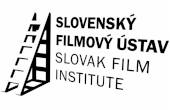“From June 2011 up to today the Polish Film Institute hasallocated 3.5 milion euros to co-financing the digitalization of a hundred or soscreens belonging to art-house circuits, with the aim of ensuring that even inthe country’s small and medium-sized towns there is a varied offer ofquality cinema,” stated Renata Pawlowska-Pyra, responsible for the project,whilst presenting the main features of cinema-going in Poland.
To date, the initiative has thus made it possible forthe new technology to be adopted even in theatres not belonging to the bigcircuits - Multikino, Helios and Cinema City – who hadalready completed their transition to digital by mid-2012. Using fundscollected by the PISF from the box-offices of all cinemas, up to now theinitiative has achieved its prime objective of preventing theatres with amainly social and cultural vocation from being relegated to the far edges ofthe market.
This approach aroused particular interest amongst thecourse participants and in particular those coming from countries where theexhibitors feel a need for similar measures to be adopted, such as Greeceor Bosnia Herzegovina.
The impending disappearance of 35mm is of particularconcern on this type of market, where the rate of digitalization is below theEuropean average.
In Bosnia Herzegovina, for example, the rate ofdigitalization has only recently reached 50% of screens: here – accordingto professional players – the radical modernization hoped for in thesector should make it possible to increase pro-capita cinema-going, which todaydoes not even amount to half a ticket per inhabitant.
The day continued with a session devoted to technologyand with a significant title: “Everything that an exhibitor should knowbefore buying a digital projector,” held by Emidio Frattaroli, Directorof the trade journal AV Magazine.
The talk encouraged a critical look at some topics ofcrucial interest for the quality of digital projection and met with a lot ofinterest amongst the participants.
“The projector’s resolution,”concluded Frattaroli, “is not everything and there is no equipment thatis suitable for every case. Screen width, the material the latter is made ofand the performance required of the light used (3D or not) are only some of thefactors to take into consideration. Even the information given in the technicalspecifications for the various materials may prove not to work out in practice.This does not mean it is false but that it is not always valid over time or thespecifications are not obtainable under all conditions, for example.”
The need to acquire a business culture and learn fromexperience and from the exchange of experiences is a message that also emergedfrom the case histories presented at the end of the morning sessions by MarcoFraschini, technical director of the Multiplex Le Giraffe (13 screens in theMilan suburban area) and Michael Tilios, head of market analysis for Odeon,which, with 58 screens, is one of Greece’s leading exhibition chains,also operating in the field of distribution.
The visit to the Cinema City Bonarka – 20screens in the shopping mall of the same name just outside Cracow – shiftedthe focus to content and in particular the innovative uses of digitalprojection, presented by Krzysztof Indyk,Manager of the Cinema City Poland forsouthern regions.
This complex, addressing mainly families and youngaudiences, proposes its own exclusive content, under the name Cinema Park,which aims to transform and give an active role to spectators, in particular“budding audiences”. Based on the concept of teaching byentertaining, Cinema Park offers learning paths on topics such as Nature or theenvironment, involving the children in quizzes and interactive games or inscreenings including sensorial experiences, for example in the music theatre orthe one devoted to movement.
In the evening the course moved on to Cracow inanticipation of an intense program of visits to cinemas with very variedphysiognomies and vocations, all having in common the adoption of digitaltechnology.



















